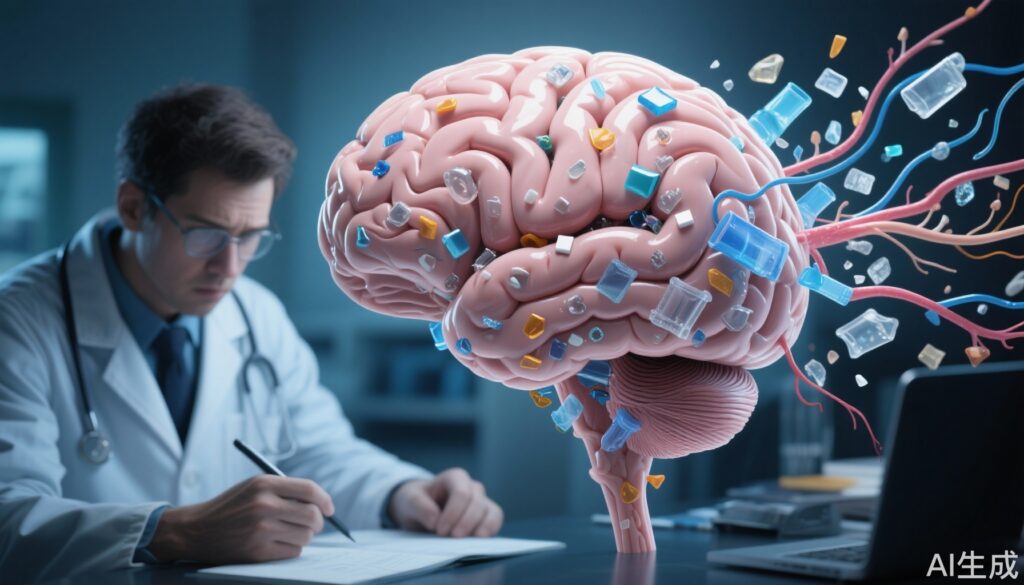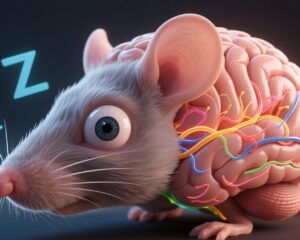Introduction
Every day, countless plastic products permeate our lives—from packaging to personal care items. Although plastic has undeniably improved modern living, its insidious breakdown into tiny particles known as microplastics has become an alarming environmental and health concern. Recent scientific discoveries indicate microplastics are not only ubiquitous in external environments but increasingly accumulating inside human organs, including the brain.
This article delves into the latest research revealing how microplastics invade the human brain, their potential effects on neurological function, and the urgent need for intensified examination of their health impact.
What Are Microplastics and How Do They Enter Our Bodies?
Microplastics are plastic fragments ranging from 1 micrometer to 5 millimeters in size. The term was coined by Richard Thompson and colleagues in 2004 after they identified persistent small plastic debris on British shores. Since plastic production exploded from 2 million tons in 1950 to over 450 million tons by 2020, microplastics have infiltrated air, water, soil, and living organisms worldwide.
Most microplastics originate from larger plastic products degrading in the environment or pre-existing as tiny beads in cosmetics and cleaning products. Additional sources include synthetic fibers shed by clothing, abrasion of vehicle tires, and paint particles.
Humans ingest microplastics daily through contaminated food, drinks, and air. Studies suggest the average person may consume tens of thousands to hundreds of thousands of microplastic particles annually, roughly equivalent to the weight of a credit card. For example, using plastic containers in microwaves can release particles into food, which are then swallowed. These tiny plastics can cross biological barriers and accumulate in body tissues.
Microplastics Accumulating in the Human Brain: The Evidence
A landmark 2024 study led by Matthew J. Campen from the University of New Mexico uncovered escalating microplastic concentrations in human brain tissue samples collected between 2016 and 2024. Remarkably, microplastic levels in the brain increased by approximately 50% over this period. Even more concerning, the concentration of microplastics in brain samples was about 30 times higher than that in liver or kidney samples, indicating a propensity for microplastics to accumulate in neural tissue.
Complementary findings reported by researchers from the Chinese Academy of Environmental Sciences and Peking University visualized microplastic particles traveling through mouse brains in real time. Using fluorescently tagged polystyrene microbeads in drinking water, they tracked these particles being engulfed by immune cells and migrating through cerebral blood vessels where they obstructed tiny capillaries in the brain cortex. These blockages resembled “traffic jams” or “crash sites,” leading to microvascular clots and prompting abnormal neurological behavior.
Behavioral tests showed mice exposed to microplastics had significantly impaired spatial memory, decreased motor coordination, reduced endurance, and even lost body weight, likely due to altered movement and feeding behaviors.
Although the direct equivalence in humans remains to be established, these animal experiments raise urgent questions about the potential cognitive and neurological implications of microplastic accumulation in the human brain.
Microplastics Everywhere: Global Environmental Presence
Microplastic pollution is truly pervasive, detected from the peaks of Mount Everest to the depths of the ocean. Scientists have found microplastics in Arctic and Antarctic ice, mountain snow, rivers, rain, soil, and urban air. Even consumables like seafood, table salt, drinking water, and beer contain measurable microplastic particles.
The primary sources fueling persistent and growing microplastic pollution include:
| Source | Description |
|————————–|——————————————|
| Personal care products | Beads in exfoliants and cosmetics |
| Synthetic textiles | Microfibers shed from clothes |
| Tire wear | Particles released from vehicle tires |
| Plastic packaging | Breakdown of bottles, containers |
| Paints and coatings | Flaking micro-particles |
Despite recycling efforts, only about 9% of the world’s plastic waste was recycled in 2019; the rest ended in landfills, incinerators, or the environment—where plastic fragments into microplastics.
Health Implications: What Do We Know?
Since the discovery of microplastics in human feces in 2019, evidence has mounted that these particles permeate human tissues. Researchers have detected microplastics in digestive, respiratory, cardiovascular, and reproductive organs, as well as in bodily fluids.
Beyond mere presence, research indicates several concerning health effects of microplastic exposure:
– Neurological impairments: Animal studies show reduced memory and motor skills with microplastic accumulation in the brain.
– Inflammation and immune disruption: Microplastics can elicit inflammatory responses and alter immune cell functions.
– Gut microbiota imbalance: Ingestion of micro- and nanoplastics affects beneficial gut bacteria, promoting pathogenic species and disrupting metabolic processes, possibly leading to intestinal inflammation and compromised barrier integrity.
– Cardiovascular risks: A notable clinical study found microplastic accumulation in the aortas of about 60% of cardiac surgery patients, correlating with a 4.5-fold higher risk of adverse cardiovascular outcomes over three years.
Emerging studies also suggest possible links between microplastics and cancer, kidney disease, fertility issues, and neurodegenerative diseases such as Alzheimer’s, though causality has yet to be conclusively demonstrated.
Nanoplastics—plastic fragments less than 1 micrometer in size—pose additional concerns due to their capacity to penetrate cells, potentially evading natural clearance mechanisms.
Challenges and Future Directions
Studying microplastic health effects in humans is challenging due to ethical and technical limitations. Current insights rely heavily on animal models and in vitro organ-like cultures, which provide valuable clues but cannot fully replicate human physiological complexity.
Advanced imaging and tracing techniques, such as two-photon fluorescence microscopy, now enable live tracking of microplastics within biological systems, shedding light on their biodistribution and cellular interactions.
Experts emphasize the urgency of expanding research funding and interdisciplinary collaboration to better understand microplastic toxicokinetics and long-term health consequences.
A Day in the Life: Imagine John’s Story
John, a 45-year-old office worker, regularly heats his lunch in plastic containers and commutes through a busy city breathing air contaminated with microplastics. Unknown to him, minuscule plastic particles silently enter his digestive tract and bloodstream daily, eventually crossing into his brain tissue.
Over years, this accumulation might subtly impair his memory and coordination, underscoring the need for awareness and safer alternatives in daily habits.
Practical Recommendations
While scientific investigations continue, individuals can reduce their microplastic exposure through simple lifestyle adjustments:
– Use glass or ceramic containers for microwaving and food storage instead of plastic.
– Limit consumption of processed and packaged foods.
– Choose natural fiber clothing over synthetic textiles when possible.
– Support policies and initiatives promoting plastic reduction and improved waste management.
Conclusion
The infiltration of microplastics into human brain tissue revealed by recent studies is an alarming development with far-reaching implications. While definitive conclusions about causation remain pending, mounting evidence calls for urgent research and public health measures to address this emerging pollutant.
As microplastic pollution continues to grow globally, understanding its impact on human health is critical. Awareness, scientific rigor, and preventive action could help safeguard neurological and overall health for current and future generations.
References
[1] https://www.science.org/doi/10.1126/sciadv.adr8243#sec-3
[2] Thompson, R.C., et al. (2004) Lost at Sea: Where Is All the Plastic? Science, 304(5672), 838.
[3] Our World in Data, Plastic Pollution.
[4] https://chn.oversea.cnki.net/kcms/detail/detail.aspx?filename=HJKZ202308050&dbcode=CJFQ&dbname=CJFDLAST2023&uniplatform=NZKPT
[5] https://linkinghub.elsevier.com/retrieve/pii/S004896971933323
[10] Koelmans, A.A., et al. (2021) Risks of Microplastic Exposure to Humans: Perspectives on Exposure and Toxicology. Environ. Sci. Technol.
[11] Schwabl, P., et al. (2019) Detection of Various Microplastics in Human Stool. Annals of Internal Medicine.
[14] Campen, M.J., et al. (2024) Tissue Accumulation of Microplastics. Nature Medicine.
[16] Xu, M., et al. (2023) Effects of Micro/Nanoplastics on Gut Microbiota and Intestinal Inflammation. Environment International.
[17] NEJM (2024) Microplastics in Human Cardiovascular Tissue and Associated Risks.
[18] Ningxia Medical University (2024) Ecotoxicology and Environmental Safety.
For a comprehensive understanding of microplastic exposure and health impacts, readers are encouraged to consult these authoritative sources.



